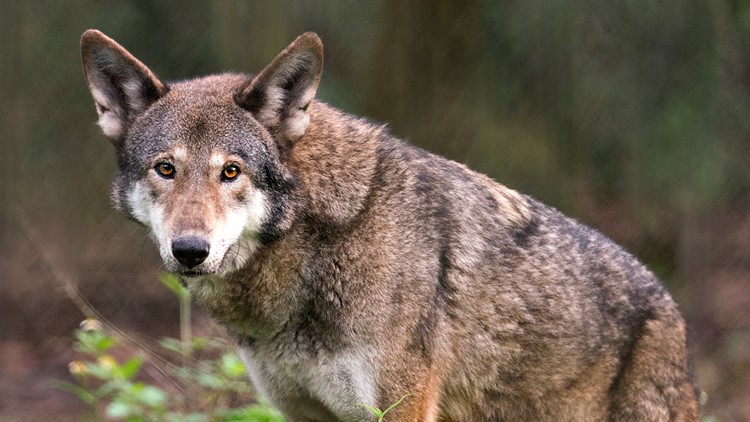KNOXVILLE, Tenn. — Researchers from the Smithsonian Conservation Biology Institute are in Knoxville to study the critically endangered red wolf.
Researchers are studying red wolves in an attempt to better preserve them after a rapid decline in population in the 1980s.
According to experts, there are only 250 red wolves left, with some of those living at Zoo Knoxville. The biologists at the zoo are there to preserve the reproductive cells and collect DNA from the endangered animals.
According to the Endangered Wolf Center, only 35 American red wolves are left in the wild out of the 250 in existence, making it the most critically endangered wolf in the entire world.
"The red wolf reintroduction effort was the first ever reintroduction of a large carnivore in human history," its website said. "The creative and innovative scientific approach to this program not only helped save the American red wolf but set the foundation for other reintroduction efforts like the gray wolf in Yellowstone, the Mexican wolf in the southwest United States as well as other endangered species recovery efforts."
The graph below shows the wild red wolf population since their decline in 1986:


The American red wolves were historically found throughout the southeastern U.S., but now, the endangered wolves can only be found on the coast of North Carolina.
"Mismanagement, illegal killing, and hybridization with coyotes threaten red wolves with extinction," said the Center for Biological Diversity.
The wolves used to outcompete coyotes, but when they were forced out of the wild due to the illegal killing, the coyotes then moved into the red wolves' former territory.
"Not only are red wolves now mating with coyotes — they’re often mistaken for coyotes and shot," the center said.
The red wolf population has seen drastic inconsistency since the 1980s, with the wild population still not reaching over 140 since the rapid decline.
According to the center, the efforts to preserve and save the American Red Wolves were stopped in 2018 when the U.S. Fish and Wildlife Service stopped releasing red wolves from captivity into their recovery area, stopped investigating red wolf deaths, and ended a highly successful red wolf education program.
The Center for Biological Diversity released a report in 2019 outlining the resources needed to reverse the decline and filed a lawsuit challenging the Service's failure to revise the outdated recovery plan from 1990.
"Following that suit and other advocacy, in 2022 the Service announced that it is redoubling its efforts to ensure that the red wolf not only survives in the wild but makes a full recovery," the center said.



